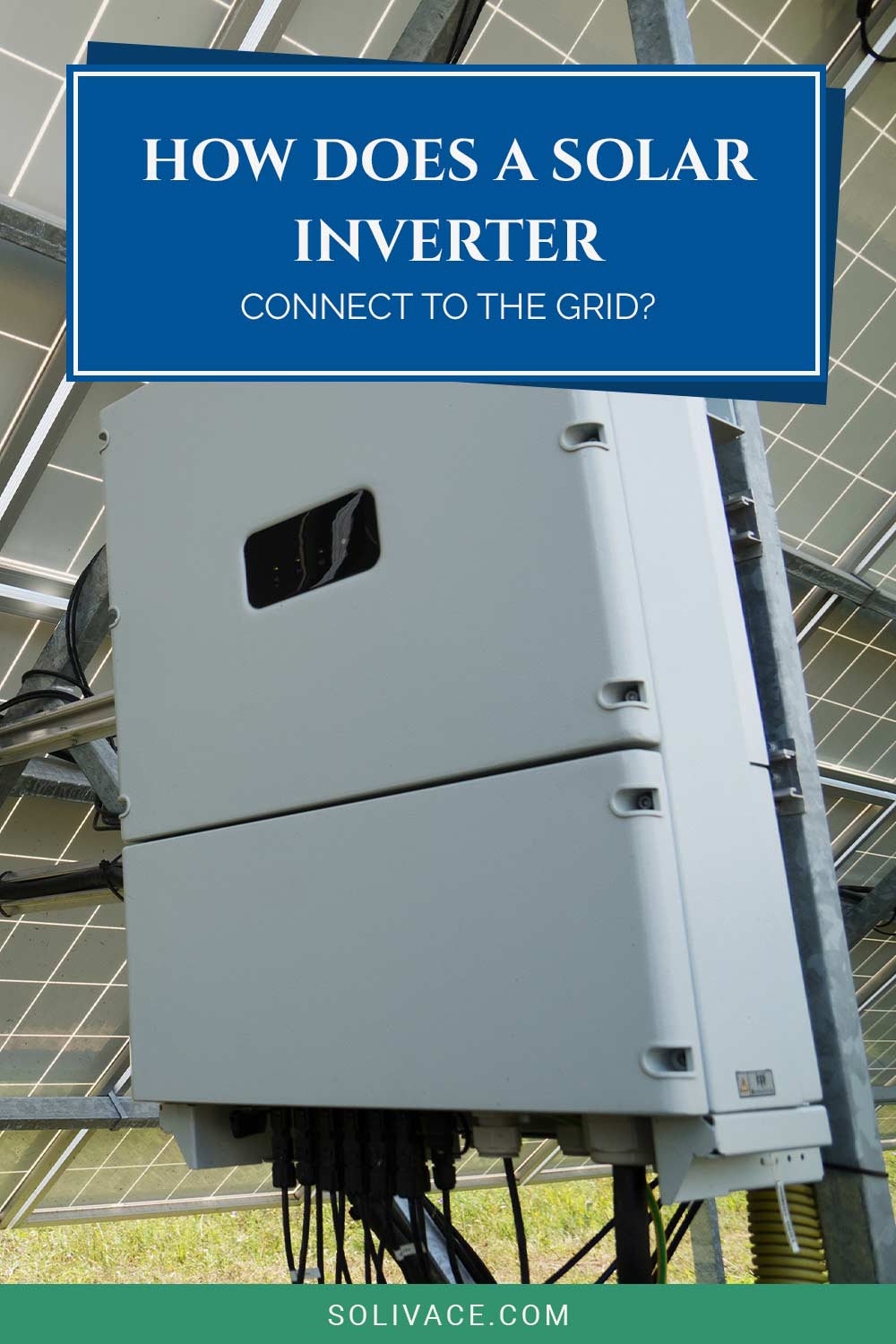How Does A Solar Inverter Connect To The Grid?
We may earn commissions for purchases made through links on our site. Learn more on our about us page.
Let us back up and start by looking at the system; the solar cells capture the solar energy, store some in the batteries, and send it to the inverter, which then converts the photonic energy into an AC current to be stored in the battery or sent out to the power grid.
There will be multiple ways for the inverter to communicate with the outside grid, including Frequency response, grid-following technology, and reactive power services.
Each one of these components plays a big role in an inverter’s ability to supply electricity to the public power grid when needed and excess power is available.

How does a Solar Inverter sync with a grid?
Adaptations within the solar cell system will be needed to help sync and communicate with the other power grid computer systems and grid operators managing the power stream.
Reactive power is a primary function of the inverter that helps sync services and efficiently utilize the energy being collected.
The traditional inverter follows a ‘grid-following’ algorithm that will keep the power flowing in case parts of the system go down.
There will also be specific signals from the power grid system that will communicate the need for power, when to shut off the flow, and when to allow overflow from the battery to enter the power grid.
How are Solar Cells connected to the grid?
As mentioned earlier in the article, there are going to be specific components that will come with a solar panel electricity collection system.
This will include the panels and inverter that will connect to the storage batteries and the power grid, allowing for seamless switching between usage, storage, and releasing energy into the neighborhood.
The solar cells collect photonic radiation and turn it into a DC current to be sent to a controller or the battery; from there, the power is sent to an inverter which then changes the current to the usable AC variety and sends it to be used at home or through the power grid.
Can a Solar Inverter work without the grid?
The inverter’s role for systems hooked up to the general power grid will be to convert the current to active and send it to where it is needed.
Specific set-ups, such as self-sufficient homesteads, will be built around battery storage and distribution to the property’s various rooms and buildings.
The inverter connected to a simplified system like this will be responsible for less by only needing to divert converted power to stations throughout the homestead network and not the larger power grids.
However, this does not mean that the component will need to be a specialized unit. The identical inverters used to connect to the city power grids will also work in this situation.
Does Solar go Straight to the Grid?
Not all solar collection sites are designed for residential usage but are more designed as industrial solar energy farms that will provide energy for the cities and homes as part of a service provided.
These systems will have a controller, battery, and inverter system set up; the only difference will be that the inverter will send power on command to where it is needed on the power networks.
There will be settings on homes and residential systems that will forgo storage and be set right out to the power grid, which will be very handy when the homeowners are out of the house.
How Can You Tell it’s not Connected Correctly?
Specific tests can be performed when you notice the power efficiency becoming an issue. Troubleshooting the system will start with the panels, checking if the solar cells are undamaged and working efficiently, then following the lines to the controller and batteries.
Some tools will be needed; consider hiring an electrician or solar panel specialist to help with the troubleshooting, but after the battery comes the connections to the inverter and from there to the rest of the home or neighborhood power network.
The most noticeable issues will be performance-based, such as dim lights or faulty modem performance.
Final Thoughts on How does a Solar Inverter Connect to the Grid
There is not much to the solar panel system, being a collector–storage–inverter system that is changing the electricity providers industry. Some homeowners will collect enough power, without using it all, to send it back into the power network for neighbors to use, if needed.
Innovative solar cell solutions have enabled even low-income households to afford them. As technologies advance and evolve as time passes, so will advancements in solar collection batteries and other components.



Leave a Reply
You must be logged in to post a comment.